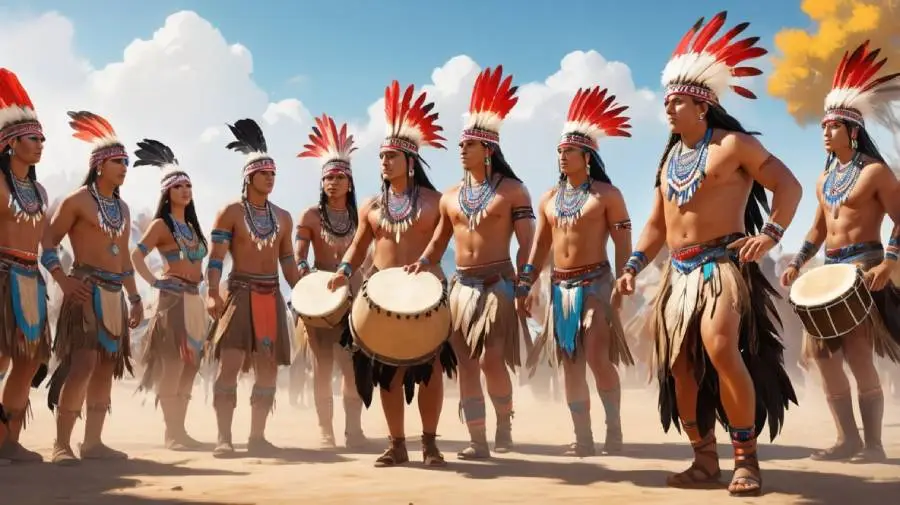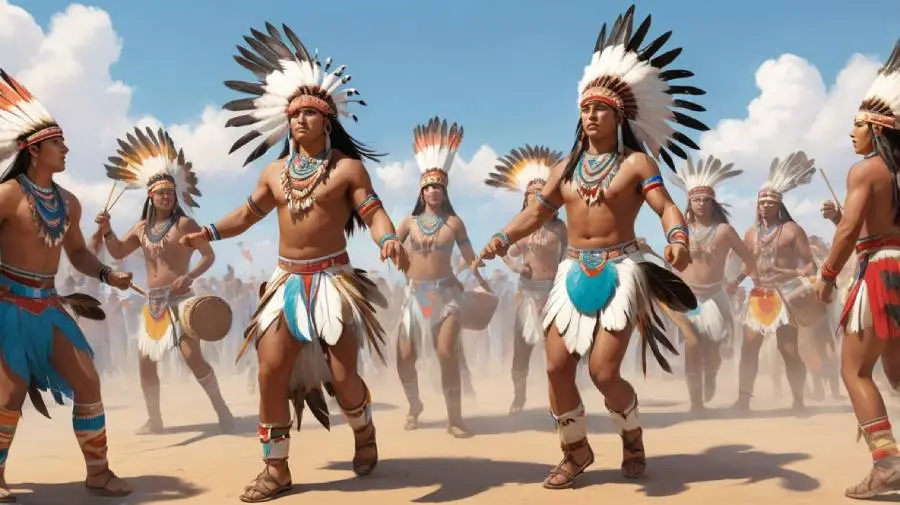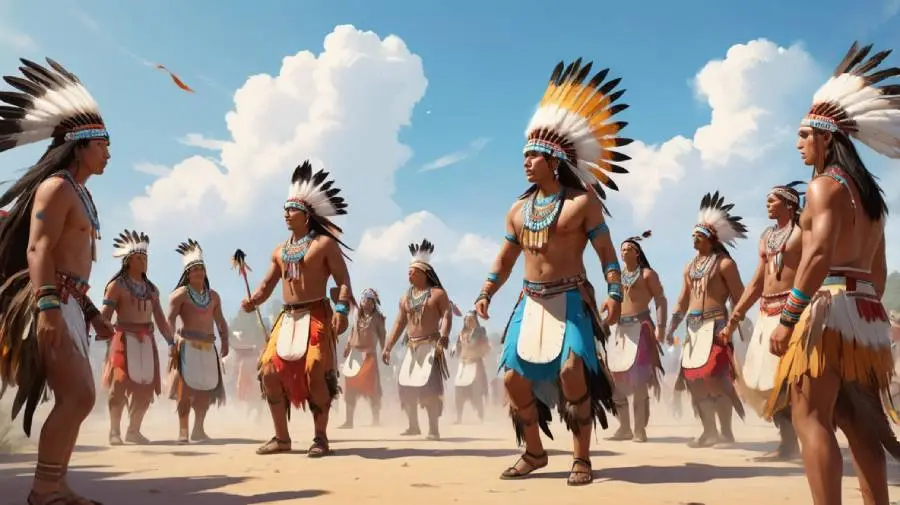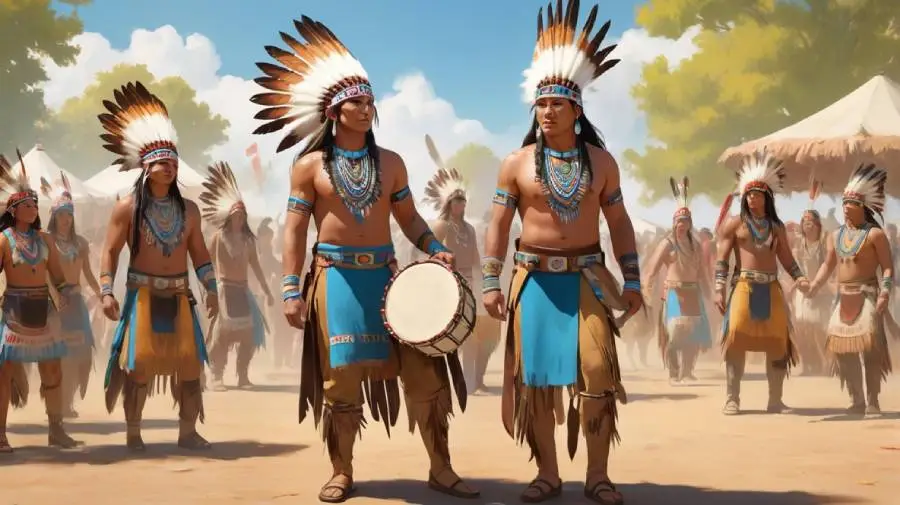American Indian Heritage Day
American Indian Heritage Day: Honoring Native American Contributions, Culture, and History
American Indian Heritage Day is a meaningful observance dedicated to honoring the rich contributions, culture, and history of Native Americans in the United States. This important day offers an opportunity for Americans to reflect on the resilience, struggles, and enduring legacy of Native American communities, and it encourages education and appreciation for their cultural heritage.
The day is celebrated on different dates across the United States, with the most prominent observance occurring on the fourth Friday of September in Texas. In many other regions, American Indian Heritage Day is observed on the day after Thanksgiving, commonly known as “Black Friday.” This unique day provides a moment of reflection on the significant influence of Native American tribes on the nation’s development and identity.

[su_box title=”Read Also:” box_color=”#fb0400″]
[/su_box]
Historical Background: The Origins and Recognition of American Indian Heritage Day
Early Beginnings and National Recognition
The observance of American Indian Heritage Day can be traced back to the early 20th century, when various states began recognizing the valuable contributions of Native American peoples. As the United States sought to acknowledge its diverse cultural history, there was a growing movement to highlight the significant role Native Americans played in shaping the nation.
In 1976, during the United States Bicentennial celebrations, President Gerald Ford declared a week of Native American awareness. This proclamation marked a pivotal moment in the ongoing effort to recognize Native American culture, history, and contributions at a national level. Ford’s declaration laid the groundwork for further efforts to highlight the significance of Native American communities.
By 1990, President George H.W. Bush took a major step forward by declaring November as National American Indian Heritage Month. This designation solidified the recognition of Native Americans’ contributions to American society, paving the way for further legislative initiatives at the state level.
[su_spacer size=”10″]You may also like:
- Veterans Day
- Day of the Dead
- International Men’s Day
- Black Friday
- All Saints’ Day
- No Shave November
- Native American Heritage Month
- Movember
- Daylight Saving Time Ends
- All Souls’ Day
- New York City Marathon
- Iran Hostage Crisis
- Marine Corps Birthday
- World Kindness Day
- Thanksgiving Day
- Small Business Saturday
- World Toilet Day
- National Adoption Day
- America Recycles Day
Legislative Milestones: Establishing the Day
The formal recognition of American Indian Heritage Day as a distinct observance came through state-level legislative efforts. One of the most notable examples occurred in Texas, where the state legislature passed House Bill 174, designating the last Friday in September as American Indian Heritage Day. This day is dedicated to acknowledging the historic and cultural contributions of Native Americans to the state of Texas and the nation.
Similarly, Maryland and several other states chose to celebrate American Indian Heritage Day on the fourth Friday of November, coinciding with Thanksgiving. These legislative decisions helped formalize the celebration of Native American heritage on a broader scale, ensuring that this important observance would be recognized across various regions.

Celebration and Activities: How American Indian Heritage Day is Observed
Cultural Events and Traditions
Celebrating American Indian Heritage Day involves a variety of cultural events that promote education, understanding, and appreciation for Native American cultures. Traditional dances, storytelling, music performances, and exhibitions are some of the common activities that bring communities together in celebration of Native American heritage.
In Texas, for example, schools and community groups often organize events that feature drumming performances, traditional dances, and hands-on cultural activities designed for students and local residents. These events are designed to teach participants about the rich traditions of Native American tribes, fostering a deeper understanding of indigenous cultures.
Similarly, in Montana, celebrations at the State Capitol emphasize reflection on the history and culture of Native American tribes. These events often feature speakers who share the histories of indigenous communities and engage with attendees in discussions about Native American contributions to society.
Educational Programs and Community Engagement
American Indian Heritage Day also emphasizes the importance of educational programming. Many schools across the United States take this day as an opportunity to teach students about the various Native American tribes that have shaped the country’s history. Lesson plans often include discussions about tribal nations, their cultural practices, and their contributions to the local communities they inhabit.
Educational initiatives help raise awareness about the importance of understanding Native American history. Schools and museums frequently collaborate to offer workshops and exhibitions that highlight the struggles and achievements of Native American people. These efforts aim to educate the public on the diversity of Native American cultures and encourage respectful engagement with indigenous communities.

Significance: Why American Indian Heritage Day Matters
Cultural Appreciation
American Indian Heritage Day serves as an essential opportunity for individuals to learn about and appreciate the rich traditions, art, and history of Native American peoples. The observance fosters greater awareness and respect for the diverse cultures of the indigenous tribes of North America. By recognizing the contributions of Native Americans, the day promotes the idea of inclusivity and the importance of cultural diversity in shaping the nation’s identity.
Reflection on Historical Injustices
Beyond cultural appreciation, American Indian Heritage Day also encourages reflection on the historical injustices faced by Native Americans. The day provides a platform for dialogue about the legacy of colonization, displacement, and violence that indigenous communities experienced. It is a chance to acknowledge the difficult history of Native Americans, from the forced relocation of tribes to the ongoing challenges faced by indigenous peoples today.
Through these reflections, American Indian Heritage Day serves as a reminder of the resilience and endurance of Native American communities. It encourages people to think critically about the history of Native American people and promotes a more nuanced understanding of their ongoing contributions to society.
Community Building and Unity
The observance of American Indian Heritage Day fosters a sense of community and unity among Native Americans and non-Native individuals alike. The day brings together people from various cultural backgrounds to celebrate Native American heritage, promoting respect, understanding, and shared experiences. These celebrations create an environment where everyone can come together and learn about the rich cultural traditions of indigenous peoples.

Criticism and Challenges: The Timing of American Indian Heritage Day
Despite its importance, American Indian Heritage Day is not without its challenges and criticisms. Some Native Americans have expressed concern over the timing of the observance, particularly when it coincides with Thanksgiving or Black Friday—the commercialized shopping day that follows Thanksgiving.
Critics argue that the commercialization of Black Friday overshadows the significance of American Indian Heritage Day, as it is often viewed as a day for consumerism rather than cultural reflection. The proximity of the two days has led some to feel that the importance of Native American culture is minimized in favor of holiday shopping and consumer activities.
These concerns highlight broader issues regarding the marginalization of indigenous cultures in mainstream American society. Despite this, American Indian Heritage Day continues to serve as a vital opportunity for cultural reflection and education, even as it grapples with the challenges of commercialization and public perception.
Conclusion: Honoring Native American Cultures and Legacy
American Indian Heritage Day plays a crucial role in honoring the contributions, culture, and history of Native American peoples. By recognizing this day, we take an important step toward fostering greater cultural appreciation, promoting education, and ensuring that Native American communities are given the recognition they deserve.
Through cultural events, educational programs, and community engagement, American Indian Heritage Day serves as a reminder of the resilience and enduring legacy of Native American cultures. As the nation continues to celebrate this day, it is vital to remember that the history of Native Americans is not only about the past but also about the contributions they continue to make to American society today.
5 Unique FAQs About American Indian Heritage Day
- What is the significance of American Indian Heritage Day?
- American Indian Heritage Day honors the contributions, culture, and history of Native American communities, offering a chance for cultural reflection and appreciation.
- When is American Indian Heritage Day celebrated?
- The day is celebrated on different dates across the U.S., with the fourth Friday of September recognized in Texas and the day after Thanksgiving in many other states.
- Why is American Indian Heritage Day important?
- It provides an opportunity for individuals to learn about Native American cultures, acknowledge historical injustices, and promote understanding and unity between Native and non-Native communities.
- How do people celebrate American Indian Heritage Day?
- Celebrations often include traditional dances, storytelling, music, cultural performances, and educational activities aimed at promoting awareness of Native American cultures.
- What challenges does American Indian Heritage Day face?
- The day has faced criticism for coinciding with Black Friday, a day heavily commercialized for shopping, which some feel diminishes the cultural significance of the observance.


